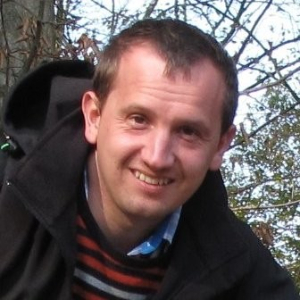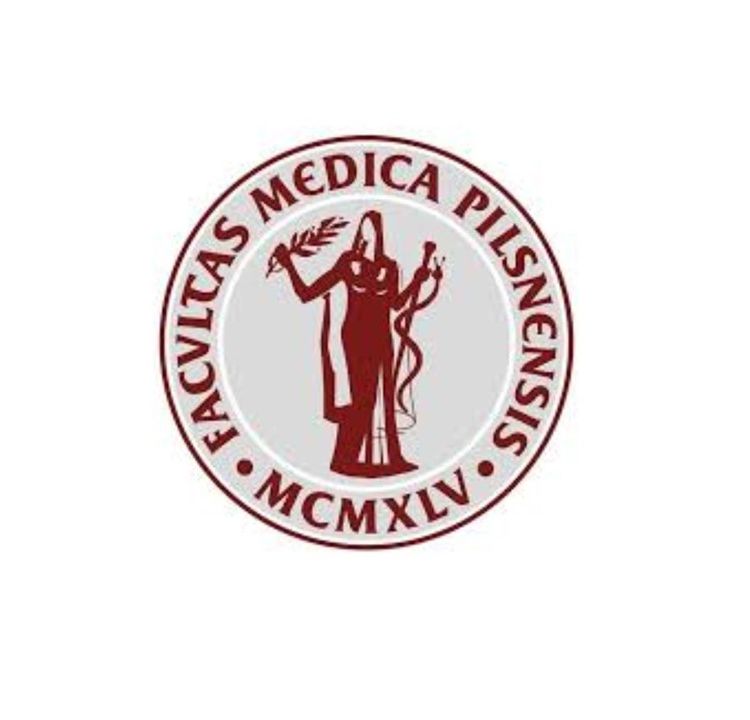
RESEARCH OF ADVANCED MATERIALS (RAM)
WHAT ARE WE DEALING WITH?
We focus on fundamental research and the exploration of novel functional materials with so-called emergent properties. These properties are unexpected characteristics that emerge at the macroscopic level due to interactions and organization of microscopic components such as atoms or molecules in the material. They include, for instance, superconductivity, ferromagnetism, topological order, and quantum entanglement. Our goal is to push the boundaries of these materials' capabilities and apply them in photocatalysis, electrolysis, fuel cells, photonics, microelectronics, and sensing. Together, we shape the future of sustainable and innovative technologies.
What is the subject of our interest in points?:
- Research and development of thin-film materials with a wide range of applications, especially for photovoltaic cells, materials for photonics and microsystem technology (in sensory and actuator microstructures)
- Electronic structure of solids and low-dimensional systems
- Development of methods for band structure calculations
- Electronic structure of materials with correlated electrons
- Electron correlations and magnetism
- Isolated and deposited magnetic clusters
- Electron spectroscopy with the main emphasis on magnetic dichroism and photoemission
- Quantum-based methods and materials design
- Characterizations advanced materials
- Quantum sensors and detectors
- Density functional theory and Green functions method
- 2D topological materials
- Novel photoemission techniques
- We are participating in the development of a software SPR-KKR band structure package that allows us to calculate the electronic structure of arbitrary 3-D periodic systems, including systems with chemical disorder.
- Fuel cells
EQUIPMENT
- SARPES instrument - photoelectron emission spectrometer with spin and angular resolution, electron analyzer PHOIBOS 150, photoemission - XPS, SPIN - angularly resolved photoemission, VUV lamp for SARPES, vacuum tank
- Deposition device - MBE System - for the preparation of monocrystalline thin films using the Molecular Beam Epitaxy (MBE) method
- X-ray diffraction - panalytical X’Pert for automatic diffractometer, Bruker AXS D8 Discover automatic diffractometer
- Thin film deposition - BOC Edwards TF600 deposition system, SAMCO PD220N PE-CVD system, Elektrorava PE-CVD multi-chamber deposition system
- Electron Microscopy - Transmission Electron Microscopy - TEM Jeol JEM-2200FS, Scanning Electron Microscopy - EOL JSM-7600F, FEI Quanta 200
- Optical spectroscopy - Atomic spectroscopy - UV / Vis spectrophotometer Specord 210 BU, Spectroscopic ellipsometer SENTECH SE850
- Vibrational spectroscopy - FTIR Spectrometer NICOLET 380, DXR Raman spectrometer
- Fujifilm Dimatix DMP-2850 material printer
- Additional equipment - Surface morphology analysis - KLA-Tencor P-6 Profilometer, Optical microscopy - Metallographic microscope Epiphot 200, Solar cell characterization - Newport Oriel AAA class solar simulator, Measurement of volt-ampere characteristics of solar cells, measurement of quantum light absorption efficiency in semiconductor materials
- Nanoindentation and tribology - Nanoindentor XP with CSM system, High-temperature tribometer HT CSEM
- ezHEMS - Nanomagnetics Instruments - Hall-effect measuring devices - accessories for measuring at low and high temperatures
- Mechanical equipment - LectroPol 5: equipment for electropolishing and etching
- High-temperature vacuum furnace
- Chemical composition analyzer
- Computing cluster
- Precision diamond band saw - EXAKT 300 CP with accessories
- UF30plus dryer
- Hei-Connect magnetic stirrer
- Fuel cells laboratory
The offer of the RAM team
- Characterization of structural, electronic and optical properties of materials
- Prediction of material properties calculations from first principles
- Electron microscopy
- Photoemission (XPS and ARPES)
- Nanoindentation, tribology and surface morphology
- Usage:
industry (new materials, nanostructures), macroscopy, nanomechanics, energy (energy storage and management)
Reference
Cooperation with foreign research institutes:
- University of Cergy - Joint laboratory and exchange of Ph.D. students
- Ludwig-Maximilians-Universität München - Collaboration on the development of SPR-KKR software
- Université de Rennes-1/CNRS - Joint preparation of ITN and RISE projects for H2020
- Attolab
Contract research:
- LF UK v Plzni, Plzeň, ČR - XPS measurements on titanium materials
- UJP Praha a.s., Praha, ČR - Analysis on samples from zirconium alloys after oxidation
- Diamorph HOB CetrTec s.r.o., Horní Bříza, ČR - Analysis on ceramic samples
- COMTES FHT a.s., Dobřany
Cooperation with domestic research institutes:
- CEITEC Nano Research Infrastructure, Brno, ČR - research of materials with topological properties for lossless electrical signal transmission
- Fyzikální ústav AV ČR, Laboratoř LNSM (Laboratory of nanostructures and nanomaterials), Praha, ČR - výzkum antiferomagnetických materiálů
- Masarykova univerzita Brno, ČR - research of material heterostructures
- CATRIN, Czech Advanced Technology Research Institute, Olomouc
- Charles University (Faculty of Mathematics and Physics, Department of Surface and Plasma Physics and Department of Condensed Matter Physics)
Partnership:
- University of Toyama, Graduate School of Science and Engineering for Research, Japonsko (prof. Keisuke Hatada) - PARTNERSHIP AGREEMENT
- Gwangju Institute of Science and Technology (GIST), Gwangju, South Korea (prof. Bongjin Simon Mun) - Smlouva PARTNERSHIP AGREEMENT
- Universitat Politècnica de Catalunya, Barcelona, Spain - PARTNERSHIP AGREEMENT
current, selected projects - ram
Quantum Materials for Applications in Sustainable Technologies "QM4ST" - Ministry of Education, Youth and Sports, Czech Republic, P JAC, Priority 1 – Research and Development. Co-financed by the European Union, October 1, 2023 - June 30, 2028.
The project focuses on studying materials exhibiting entirely new properties explainable by quantum physics. The properties of these materials are influenced by quantum phenomena occurring at the atomic and subatomic levels, such as electrons and photons. These phenomena affect the behavior of materials on a macroscopic scale, manifesting in their unusual characteristics. Examples of such materials include superconductors capable of conducting electric current without any resistance or topological insulators that act as insulators inside but conduct electricity on the surface. Quantum materials will find applications not only in quantum computers, quantum cryptography, unique sensors, integrated circuits, or energy-efficient electronic devices but also in the fields of medicine and advanced biotechnologies. They may also play a crucial role in emission-free technologies.
MEBIOSYS - Mechanical engineering of biological and bio-inspired systems - P JAC Excellent Research - Co-financed by the EU - Ministry of Education, Youth and Sports - 09/01/2023 — 06/30/2028
The goal of the project is to strengthen international cooperation, team development, and the implementation of top research to develop a new generation of ground-breaking engineering products that are the result of the convergence of biological and technological evolution.
TWISTnSHINE - New Quantum Properties Using Structured Light in the Interaction between Radiation and Matter - ERC CZ - Ministry of Education, Youth and Sports - 01. 01. 2024 - 31. 12. 2025
The project explores quantum technologies and the utilization of special properties of light that can influence the state of electrons in certain materials. A Czech-French research team will specifically focus on the study of so-called chirality, which occurs in physical objects that are not identical to their mirror image. Simplistically, it can be imagined as the difference between the left and right hand. The TWISTnSHINE project is supported by ERC CZ under the Starting Grant for young and promising scientists regardless of their nationality with a two- to seven-year experience after completing their doctoral studies.
SENDISO - Sensors and Detectors for the Information Society of the Future - OP RDE - Priority 1 - Research and Development - CZ.02.01.01/00/22_008/0004596 - 01/ 2024 - 06/ 2028
The project integrates various research areas into one interdisciplinary program. It aims to develop new tools for research in biology and to enhance diagnostics, treatment, and monitoring in medicine. It also focuses on environmental monitoring and quality control in industry. The main focus of the program is the development of new sensors and detectors using physical methods and materials. These sensors could also be used for chemical and biological detection. An important part of the project is the research on thin films and nanostructures, which can respond to various types of radiation or chemicals in the atmosphere and biological fluids. Such an approach goes beyond the scope of classical materials research and (bio)chemistry.
EUSpecLab - European spectroscopic laboratory for modeling the materials of the future - European Commission Marie Skłodowska-Curie Actions (MSCA), 01.09.02022 - 31.080.2026 - registration number: 101073486
Thanks to the call of the Marie Skłodowska-Curie Action (MSCA), we are implementing, together with our European partners, a new doctoral program. EUSpecLab will train students in spectroscopy, artificial intelligence, machine learning, material modeling, software development, and other fields relevant to the industry.
MSCA Fellowships CZ - UWB - Co-funded by the EU and MEYS - 1.10.2024 - 28.2.2027, Registration Number: CZ.02.01.01/00/22_010/0008948
The project's primary objective is to strengthen research capacities and facilitate knowledge transfer within the research organization by integrating international researchers into research teams at the University of West Bohemia (UWB) in Pilsen. The arrival of foreign researchers will enable the transfer of their expertise and experience while simultaneously fostering an international research environment at UWB. This initiative will support the implementation of international mobility for researchers who have submitted high-quality scientific proposals under the MSCA Postdoctoral Fellowships 2023 call.
National Centre of Competence ENGINEERING– TA CR - 01.01.2023 – 31. 12. 2028, TN02000018
NCKS will focus on research, development and innovation activities necessary for increasing the competitiveness of the Czech engineering industry in the field of medium and light engineering. NCKS will deal with solving key topics important for future innovations of machines and equipment.
Advanced architecture of graphene electrodes for proton exchange membrane fuel cells - TA ČR DELTA - project no. TM05000013
The goal of the project is to develop a lightweight PEM fuel cell that can efficiently produce energy at low temperatures.
Quantum Technologies for the Czech-Bavarian Region (acronym QuantumNetX) – INTERREG (BY-CZ) 2021–2027 – BYCZ04-183
The project aims to establish a Czech-Bavarian network for quantum technologies, involving universities, SMEs, and other stakeholders. This network will serve to transfer knowledge from universities and research centers to representatives of SMEs and other actors, to support the development and use of this technology.
Completed selected projects - RAM
Technological Center NTC Techlab - Ministry of Industry and Trade within the program "Operational Program Entrepreneurship and Innovation for Competitiveness" in the call "Infrastructure Services - VII. Call - Public Support - Activity C)", 01.01.2021 - 30.06.2022, registration number: CZ.01.1.02/0.0/0.0/20_329/0023413
This is an investment project aimed at investing in instrumentation and experimental equipment to fully complement the NTC research infrastructure and thereby strengthen NTC's capacity for collaboration with partners.
CEDAMNF - Computational and Experimental Design of Advanced Materials with New Functionalities CZ.02.1.01/0.0/0.0/15_003/0000358 - 01. 01. 2017 – 31. 10. 2022
The main theme of the new research program will be the experimental and theoretical study of the structural, electrical, magnetic, and spectroscopic properties of new technologically promising materials. This research will be further supported by other significant experts with long-term involvement in materials research, and approximately half of the research team will consist of young doctoral students who will be fully involved in this research.
National Competence Center for MECHANICAL ENGINEERING - TA CR - TN01000015 - 01/2019 - 12/2022
The NCKS project focuses on research, development, and innovation needed to increase the competitiveness of the domestic mechanical engineering industry in the field of medium and light engineering. The purpose of establishing the consortium was to jointly implement applied R&D, strengthen and further develop cooperation between companies and research organizations, and increase their competitiveness. The center addressed issues and topics significant for future innovations in machinery and equipment. In its projects, it focused on improving the performance and precision of machinery and equipment, reducing energy consumption, automating manufacturing processes, shortening innovation cycles, cost optimization, and incorporating Industry 4.0 trends.
Research team









